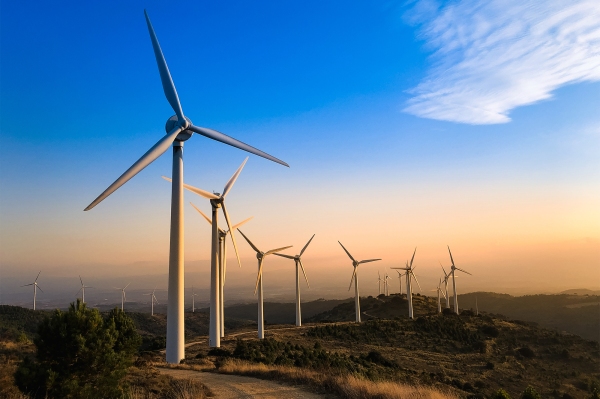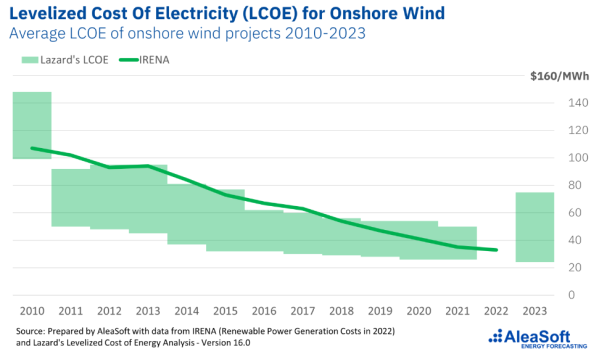An anonymous social media user whose contributions often promote nuclear power wrote this on Twitter X today:
All of the windmills currently installed will need to be replaced before our net zero target date of 2050. Welcome to the Red Queen1 effect.
Harris Berton, an expert in energy technologies and sustainability offered an excellent response:
In fact this is good news. Fully amortized wind and solar farms can be repowered with the latest tech and lower costs than a greenfield site. Don’t mistake this for a problem, in fact it’s one of the reasons for my optimism.
It must dishearten nuclear proponents when wind energy is shown to be a low-cost source of electricity able to be installed in a few years, instead of almost two decades.


North America’s newest source of nuclear power is at the Vogtle facility in Georgia. The first agreement to sell power from Vogtle’s Nuclear Units 3 and 4 was concluded in 2008, fifteen years before the energy was available.
Originally budgeted at $C19 billion, Units 3 and 4 at Vogtle were to be in service in 2016 and 2017. Electricity was delivered seven years after promised and the project cost had soared to C$47 billion.
Plant Vogtle is the most expensive power plant ever built on earth.2 Vogtle’s electricity is estimated to cost C$230–C$243/MWh, which is astoundingly high. These high costs are why 49 other states decided against building nuclear plants, even with lavish federal subsidies.
They pursued far more affordable clean-energy solutions: 2,200 MW of geothermal would have cost just C$12 billion, and solar plus storage would have cost between C$5 billion and C$7 billion.
Plant Vogtle: Not a Star, but a Tragedy for the People of Georgia
1 The comment derives from Lewis Carroll’s Through the Looking Glass when the Red Queen said to Alice, “Now, here, you see, it takes all the running you can do, to keep in the same place. If you want to get somewhere else, you must run at least twice as fast as that!
2 Wait until we learn the cost of Site C power. It will almost certainly exceed that of electricity from Vogtle’s new reactors.
If you find value at IN-SIGHTS.CA, please consider financial support. Significant payments for site hosting and subscriptions for software and news sources are required and the site carries no advertising.
As Tony Stubblebine said, “It’s expensive to write about things that you don’t already know.”
Supporting this work is a straightforward process explained HERE.
Categories: Energy, Energy - Wind, Power Generation




https://lailayuile.com/2023/12/28/the-more-things-change-the-more-they-stay-the-same-when-it-comes-to-bc-hydro/
So now BC Hydro likes the idea of powering datacentres?
Consider Ireland’s recent problem with Big Tech datacentre energy deals.
You might want to share this with Laila Yuile who writes.
I did see another really interesting bit of news in my online travels, one many don’t seem to be aware of.
Powerex, the separate trading entity of BC Hydro that buys and sells electricity, recently signed a deal to provide the Microsoft Data Center with reliable renewable energy and take the surplus from their other renewable suppliers.
Yes indeed, Apple cut a similar sounding deal deal with Ireland
https://www.theguardian.com/world/2024/feb/15/power-grab-hidden-costs-of-ireland-datacentre-boom
As world temperatures increase, datacentres have migrated to places where the climate is temperate. There, they consume vast amounts of energy, increasing carbon emissions. It’s a frightening and seemingly unsustainable pattern; we’ve entrusted our memories to a system that might destroy them, and us. Because of this fraught reality, datacentres in Ireland have become controversial in the past five years, and the tone of the newspaper articles discussing them has changed. It’s suggested that if all the datacentres currently proposed in Ireland are built, they could be using up to 70% of the country’s electricity by 2030.
Reliance on fossil fuels and on-site generation has remained a concern for environmentalists in the intervening years, with close scrutiny being paid to developers’ commitments to contributing to Ireland’s renewable power grid. The journalist Aoife Barry, in her research for her recent book Social Capital, has identified the ways in which multinationals are greenwashing their contribution toward renewables, including the case of a high court review of a planned Apple datacentre in County Galway in 2018:
“The board sought more information on the plans, saying there was a lack of clarity around ‘direct sustainable energy sources’, including how Apple would live up to its promise of running on 100% renewable energy. When Apple submitted a revised environmental impact assessment to the council, it indicated that it wouldn’t be generating renewable energy itself. Instead, it would buy renewable generated power from an energy supplier ‘equal to the total power consumption of the datacentre building in any particular year’.”
This equation works out only if energy demands don’t continue to rise in the coming years, meaning any renewable investment is going to continue to lag behind the needs of the expanding datacentre sector.
Is Apple a valued customer?
In an effort to entice further foreign direct investment, the government has implemented measures aimed at streamlining the planning process for datacentres, which would allow concerned citizens less visibility into the estimated environmental impacts of these centres. Decreasing transparency in this instance seems unnerving, and symptomatic of the Irish state’s strange relationship with multinationals. In 2016, the Irish government rejected the European Commission’s ruling that Apple should pay Ireland €13bn in unpaid taxes, arguing that the lower corporate taxation rate the country offered at the time makes Ireland more attractive for investors. The logic behind that decision might have been confusing to everyday Irish citizens, given that at that time they were each saddled with €42,000 in debt accrued after the International Monetary Fund’s bailout of Ireland’s banks.
Besides everyone knows that unlike tiny Ireland, Canada and BC in particular are world leaders in understanding what hardware, software and energy combinations are most disastrous to implement.
LikeLike
Fission nuclear power in this day and age is a pipe dream as the negatives including highly radio active waste, are hugely expensive to deal with and are environmental time bombs. Until fusion power becomes affordable, all thought on nuclear power should be curtailed.
Wind and solar power is becoming far cheaper and is local as most homes can install both at an affordable price.With wind/solar, there are much smaller (cheaper) distribution and there is little fear of a blackout because homes can generate enough power to meet emergency needs.
We need to think smaller and to reward efficiency, something that big corporations do not like!
LikeLike